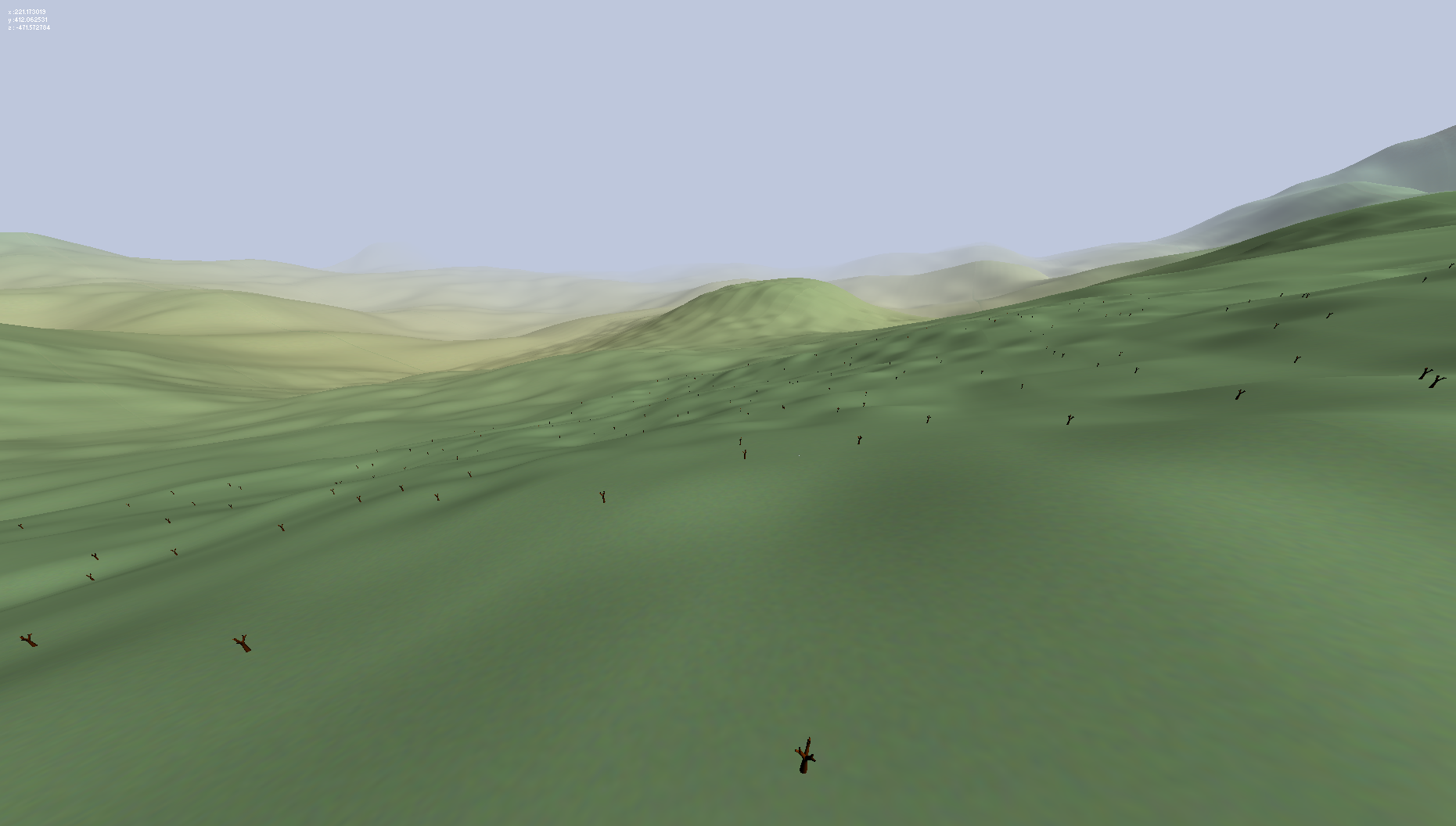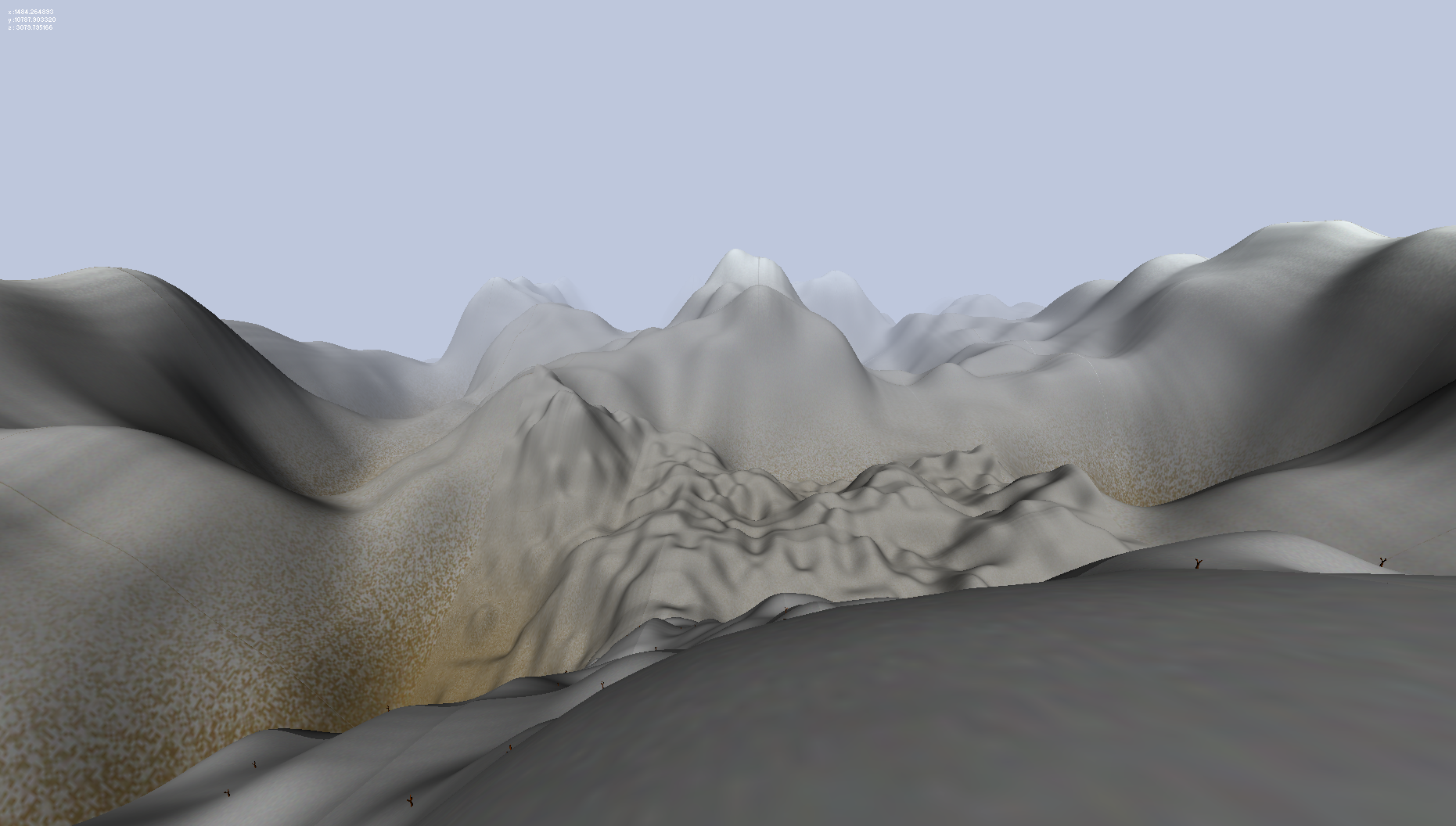I've been working on a cool open-source library project involving infinite, complex world procedural generation, and I'm looking for a community where I can share it
Since I'm using Irrlicht for rendering, I thought this forum was a good start !
The aim of the library is to generate a complex world with plenty of things (terrains, trees, bushes, rocks, biomes, clouds, buildings, dragons...) and then explore it in first person mode, or creating scenery or beautiful landscapes, maybe export them to files, and then use them in video games or 3D artworks... there is plenty of stuff you can do
Here are some visuals :


At the moment, I've only implemented the terrain and a tree generator. The lib implements a level of details features that enables to generate more details if needed.
I host the code on github ; https://github.com/BynaryCobweb/world/
You can see some (fake) example code in the "examples" folder, or in the irrlicht implementation ("modules/world3D").
Currently I'm doing a lot of work on it, that's why the most advanced version of the software isn't on "master".
I will publish a version as soon as I have fixed all the usability issues and done some bit refactoring
Don't hesitate to make suggestions ! It helps me a lot
Thank you
~Klayr~